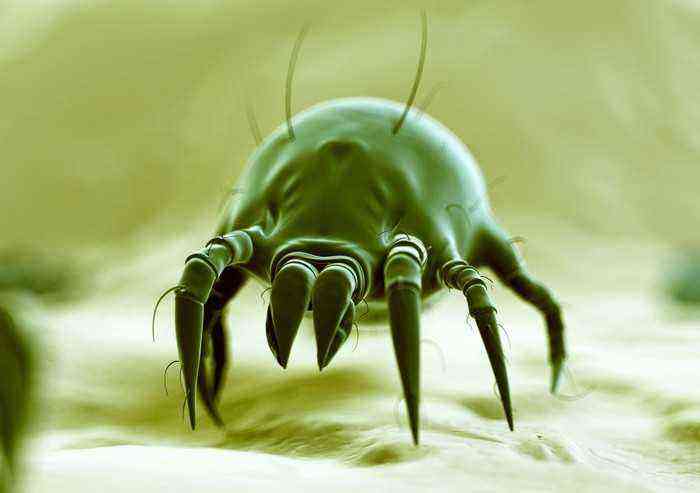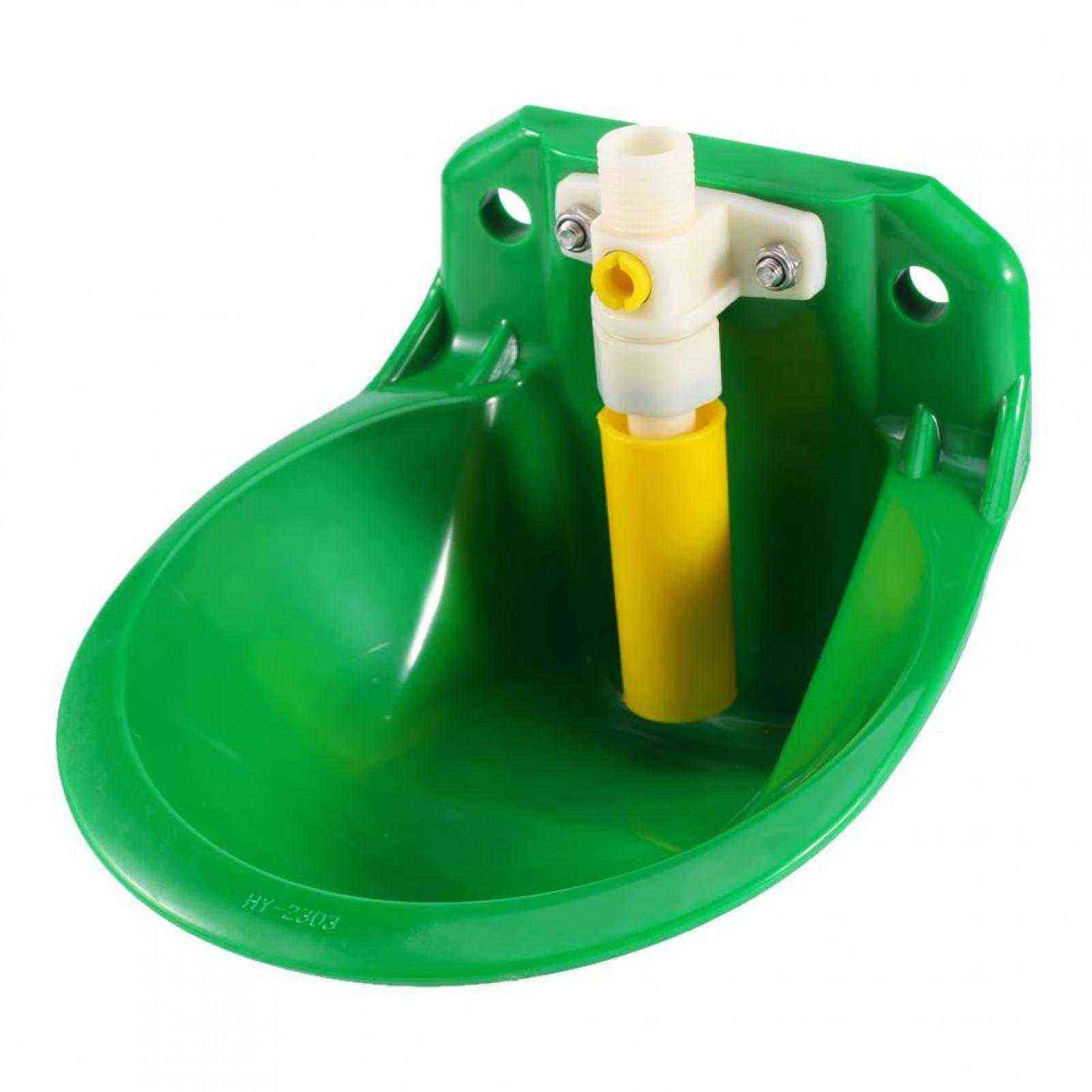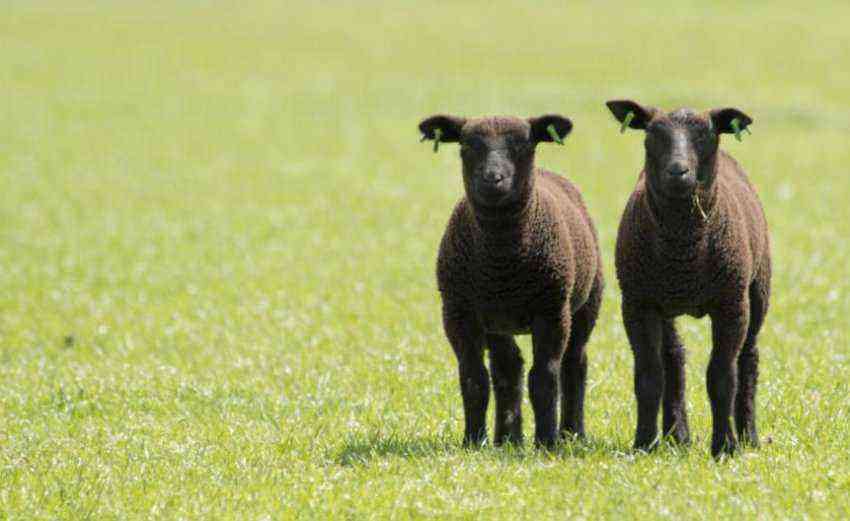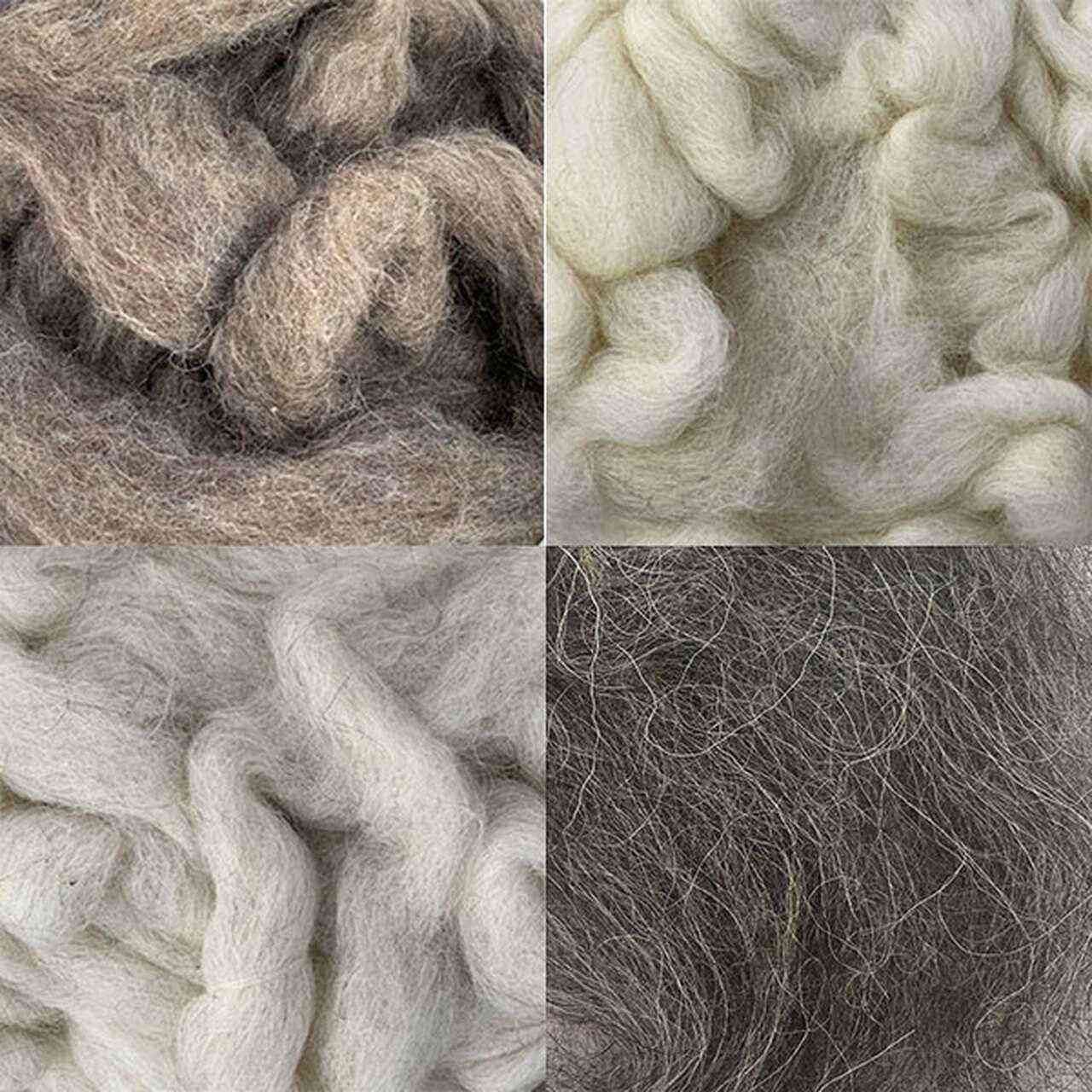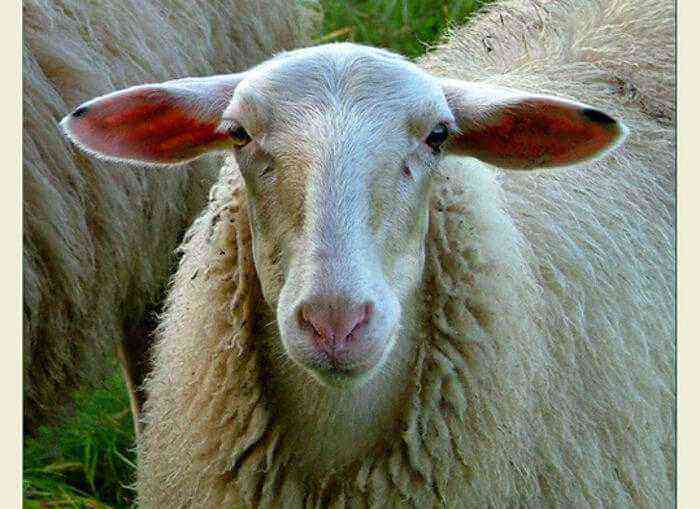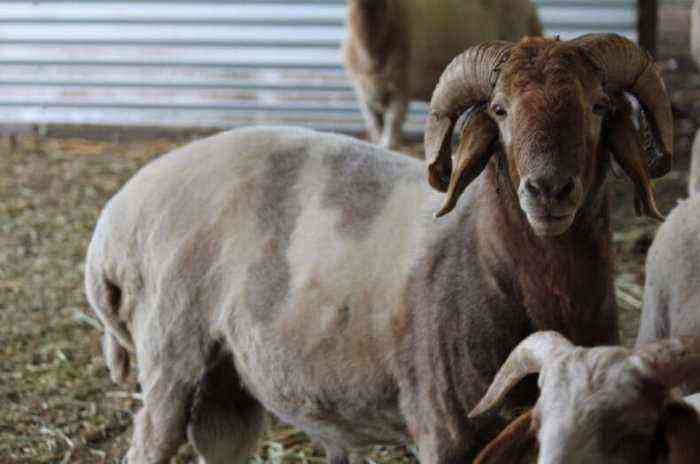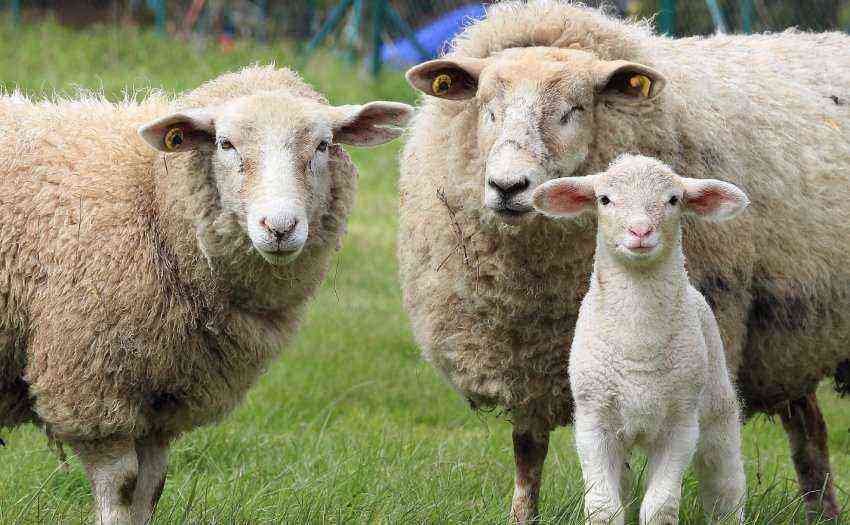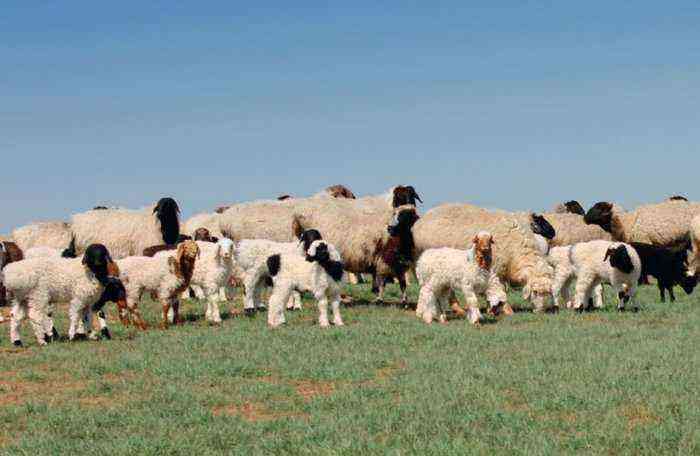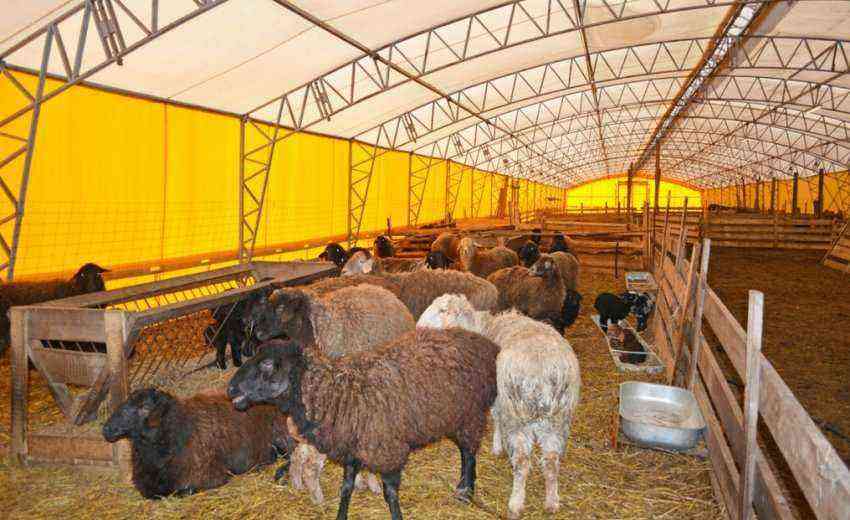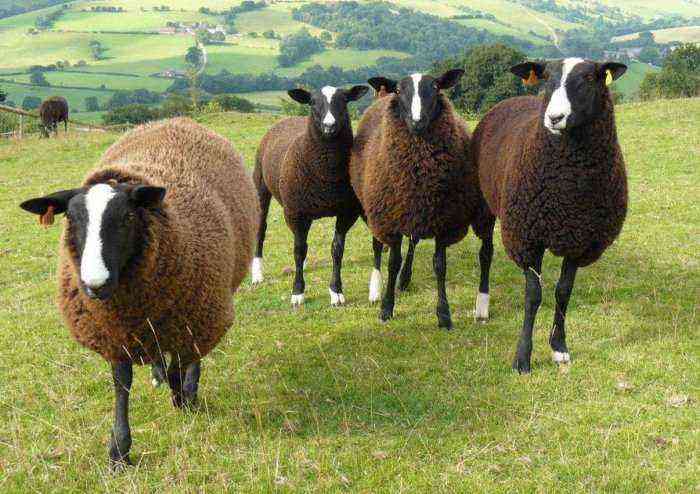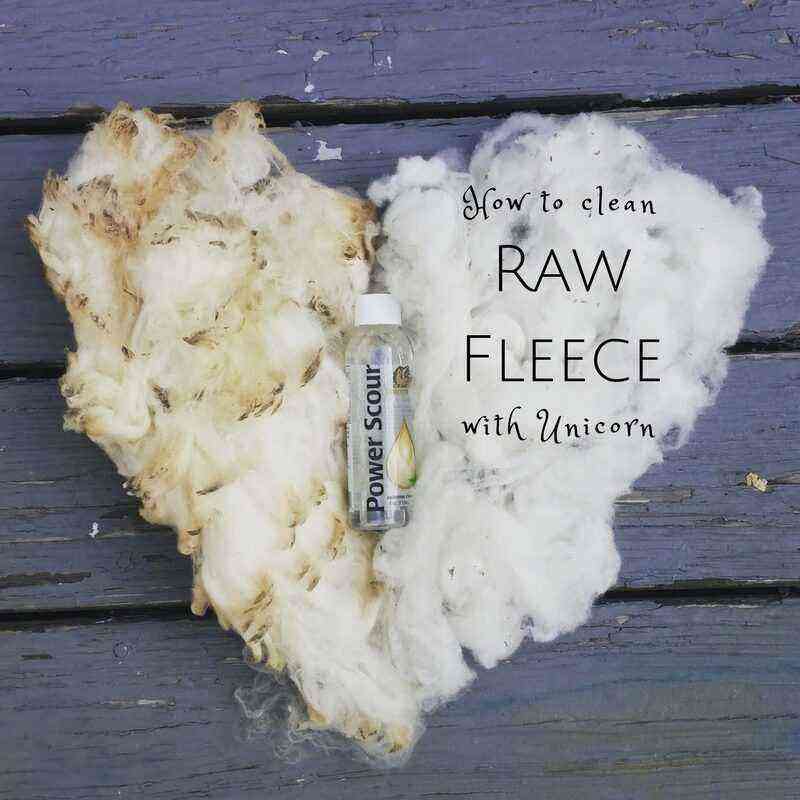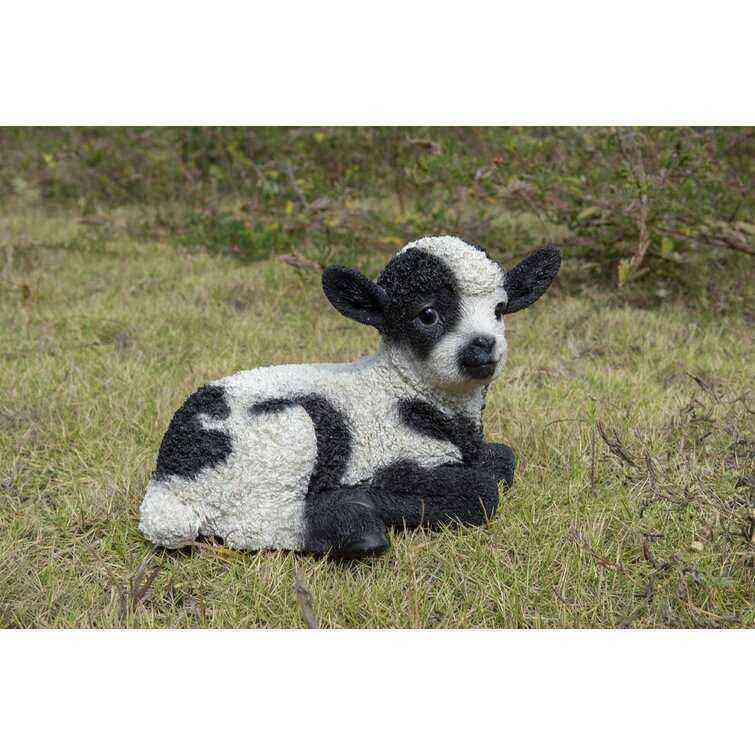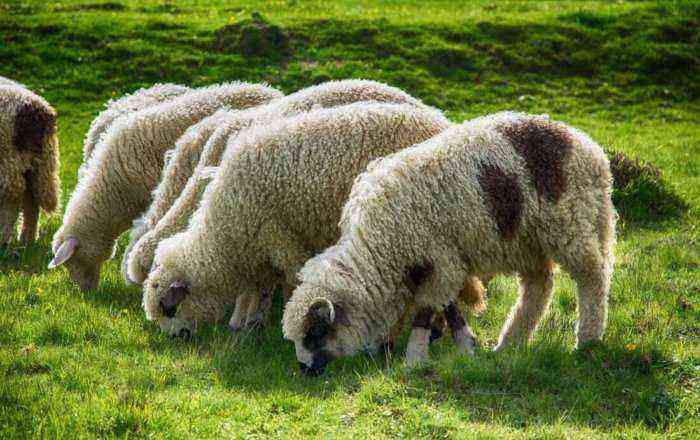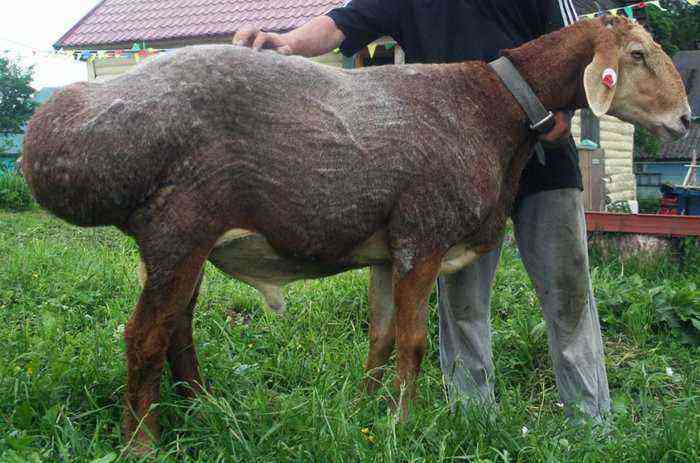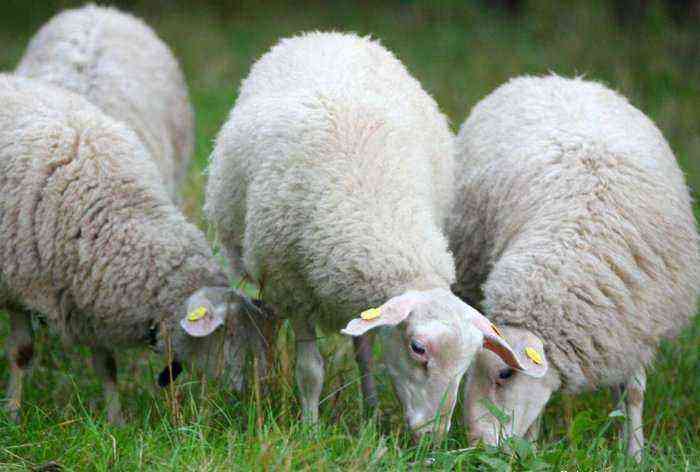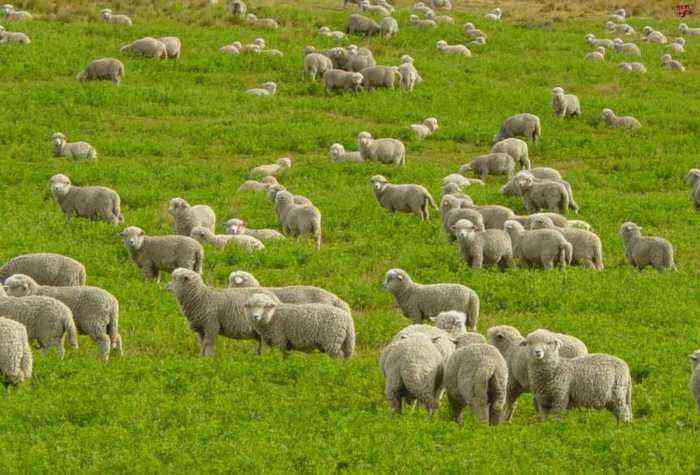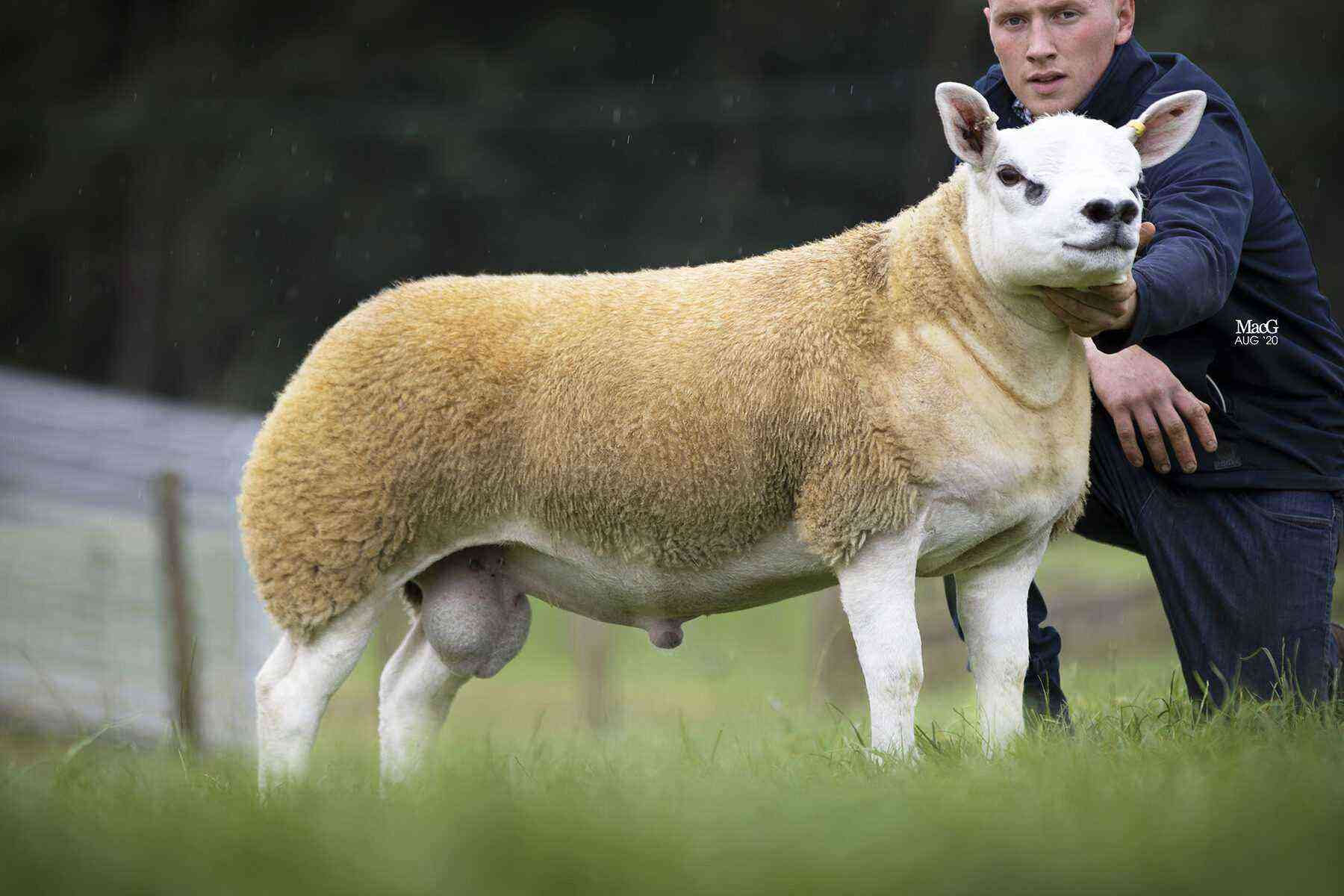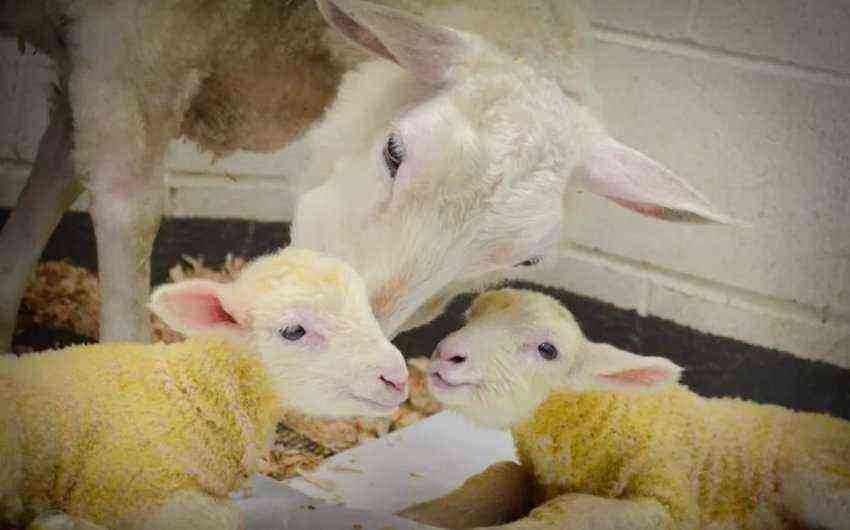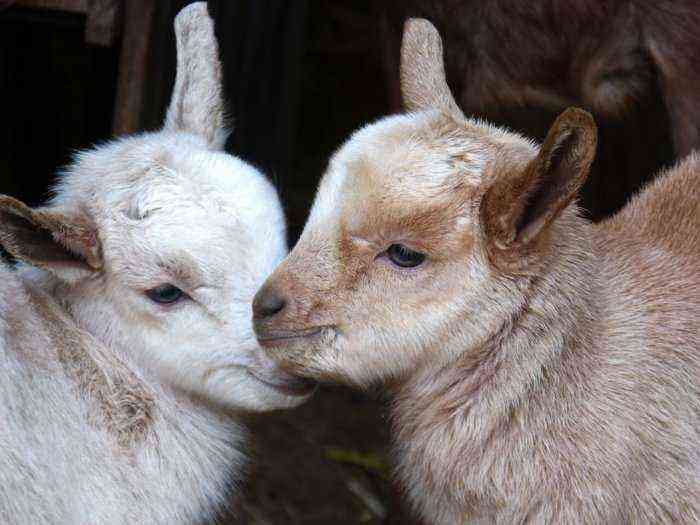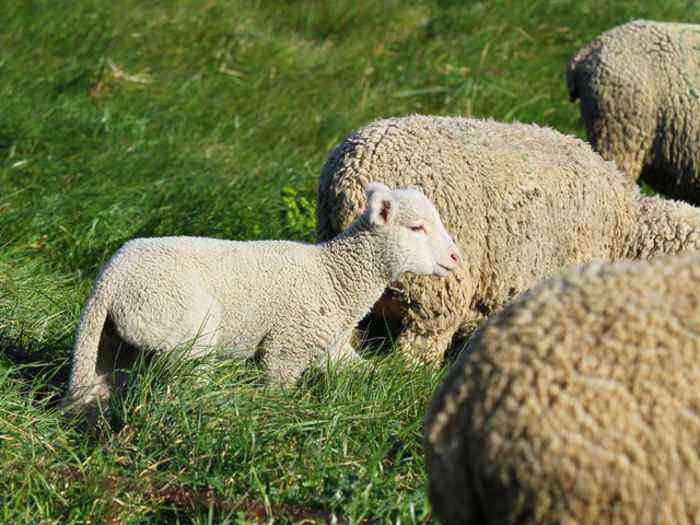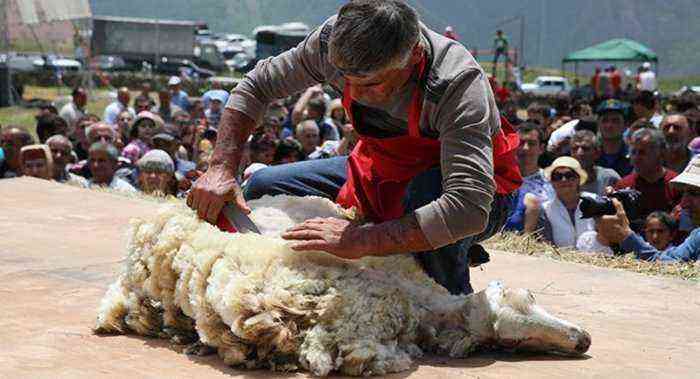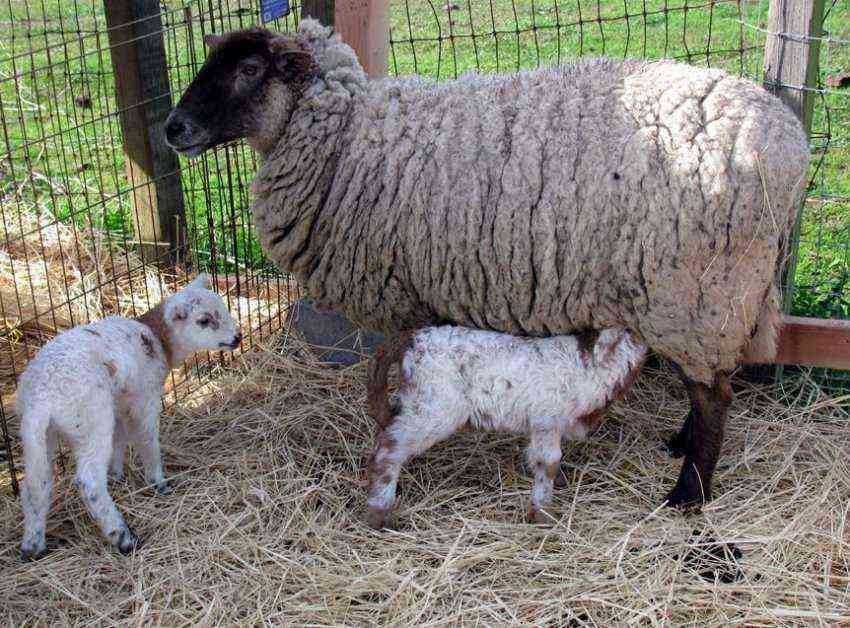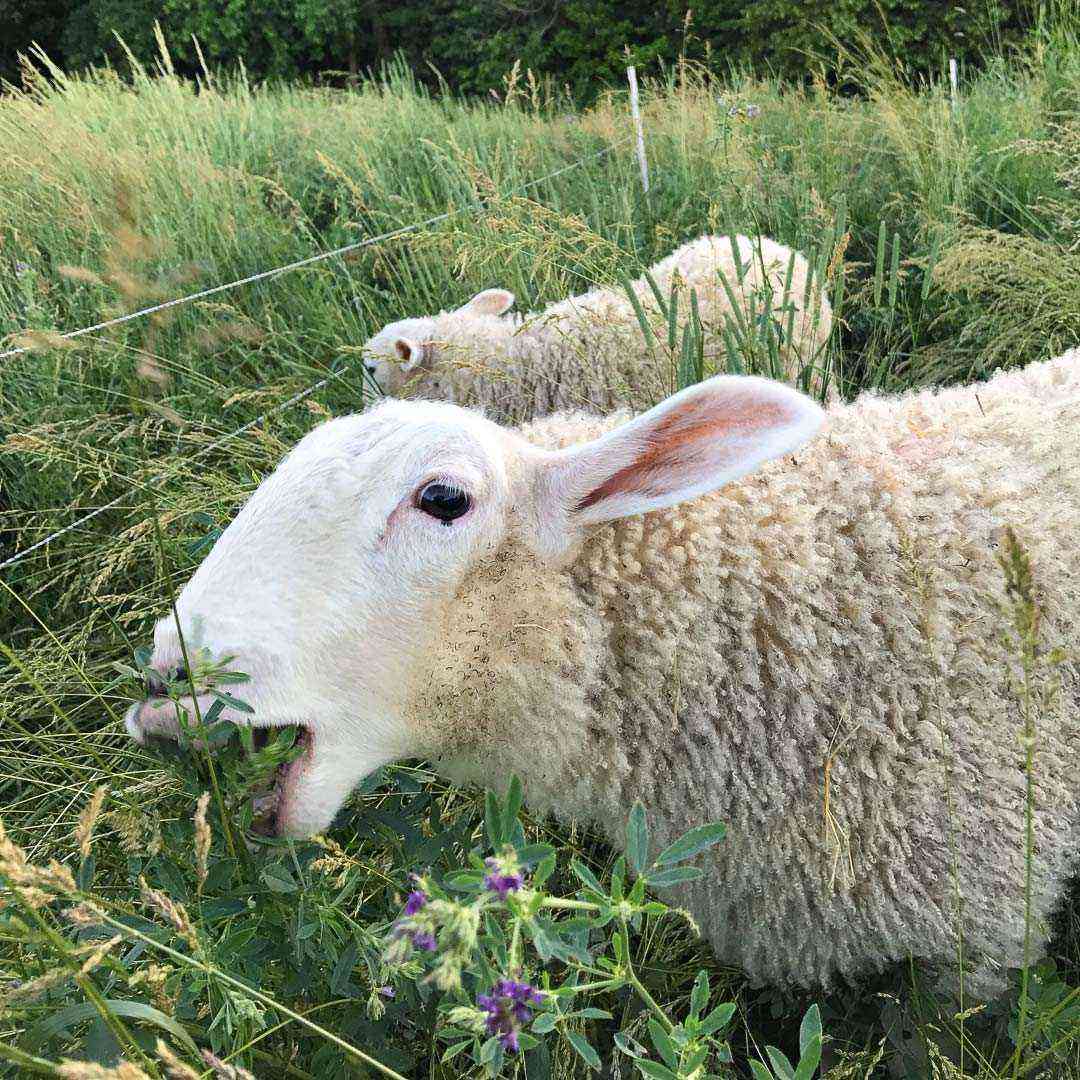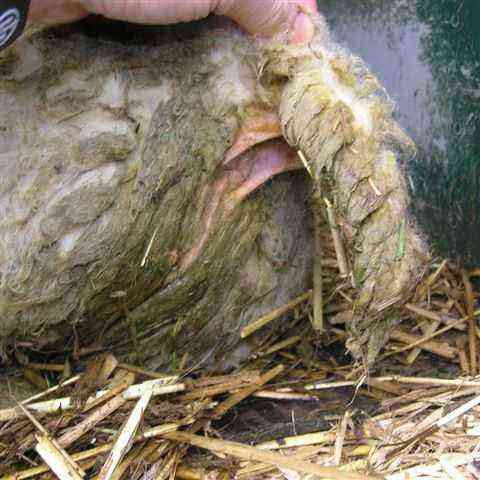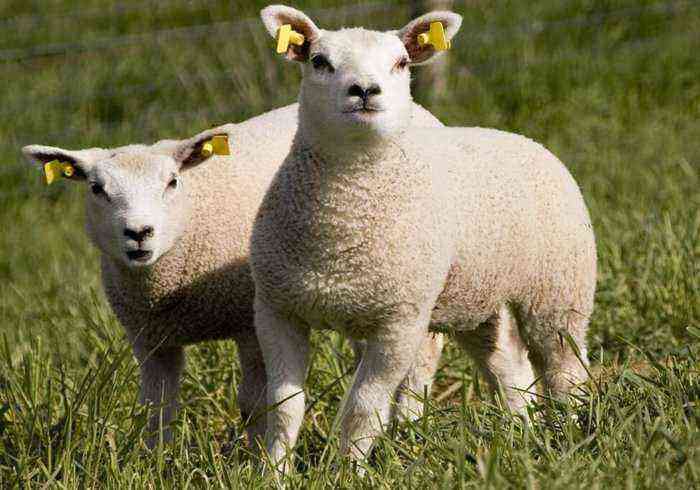White sheep are representatives of different breeds. They are valued for their uniform coat of pure white. From such raw materials, high-quality yarn is made, which can be given any shade. The article will introduce readers to representatives of various breeds of sheep that give white wool.
white sheep
Ramboulier
The Rambouillet breed originated in France in the 18th century. Merinos from Spain were taken as a basis, and they were crossed with English long-haired lambs. The breed belongs to the meat and wool direction.
Characteristic:
- strong build;
- well-defined muscle mass;
- back line is straight;
- the body is elongated;
- the head and lower part of the legs are not covered with hair;
- rune color – white, length – up to 8 cm, fineness class 64;
- clipping from a male is 10 kg per year;
- zhiropot plentiful, beige;
- the weight of an adult lamb reaches 90 kg, the uterus – 55-60 kg;
- the fertility of rambouillet ewes is at an average level of 150%.
Prekos
The prekos breed was also obtained in France. For its breeding, rambouillet and fine-fleeced English sheep were used. Thanks to parental genes, the animals inherited a strong constitution, good body hair and precocity.
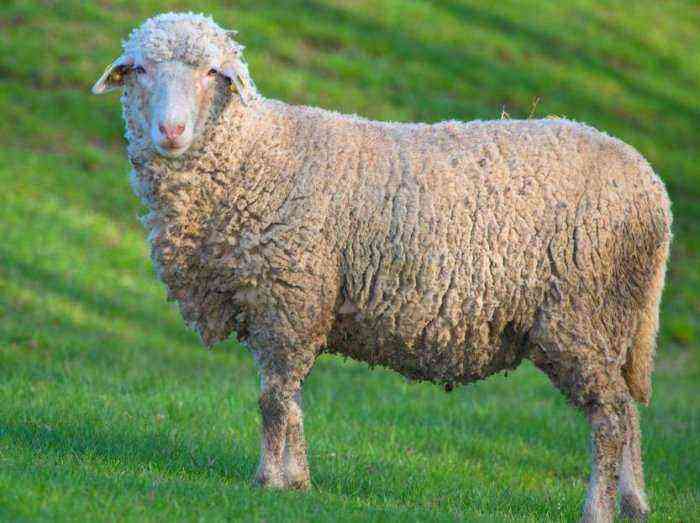
Breed cross
Features:
- massive body;
- the back is straight, the sacrum is wide;
- legs are set correctly;
- lambs are polled, lambs are partially horned;
- the weight of the male reaches 120 kg, the uterus – 65-70 kg;
- the length of wool fibers is 8-10 cm, the yield of raw materials after washing is 48%;
- fineness class – 58-60;
- fertility – 140%.
The disadvantage of the breed is the small overgrowth of the abdominal region, head and limbs.
Merino
Merino sheep are the owners of high quality wool. Their fleece is long and thin, and expensive fabrics are made from it for tailoring. Such raw materials have distinctive features: hygroscopicity, the ability to retain heat well, and softness.
There are 2 varieties of Merino – Australian and Soviet, but they are all descendants of Spanish sheep. In turn, sheep from Australia are divided into 3 types. Animals differ in the constitution of the body and the quality of the fleece.
The coat of these animals is so thick that sometimes it even hangs over the eyes. The entire body of Merino sheep is covered with spectacular curls. Most varieties of merino have skin folds on the neck.

Merino sheep
Sheep of this breed belong to the meat-wool direction. Their physique is harmonious, but the weight is small – the body weight of an adult ram reaches 90-100 kg, and the uterus – 55 kg.
Texel
The Texel sheep breed existed during the Roman Empire, but the British were engaged in its final development in the 19th century. In those days, there was a demand for lean lamb, so breeders worked in this direction. And so the breed was obtained, providing farmers with lean meat. The body of animals is covered with thick white hair, except for the limbs and head.
Features:
- large physique, muscular corset stands out well;
- body proportional;
- the body is rectangular;
- legs are powerful, straight;
- compact white head;
- there are black spots on the auricles, eyelids and nose;
- growth at the withers reaches 87 m, females are slightly smaller;
- sheep weight – 150 kg, uterus – 70 kg
- fiber length – 7 cm, annual clipping from the male – 7 kg, from the uterus – 4,5-5 kg.
Attention! Representatives of the Texel breed are distinguished by good health, unpretentiousness and endurance, they are physically strong.
Hampshire
Hampshire sheep come from England and were bred in the first half of the 19th century. They are popular with farmers due to the high quality of the white fleece. Although the average annual shearing of raw materials for these animals is small, but after washing the wool, the net yield of products reaches 60%.

Hampshire sheep
Reference. The Hampshire breed belongs to the meat-wool direction of productivity.
Features:
- large animals (rams weigh 100 kg, lambs – up to 70 kg);
- the chest is powerful;
- the back is flat and wide;
- the head is compact, there are blackouts on the muzzle;
- rams and sheep are polled;
- white wool of medium length (7-8 cm), fineness assigned to class 58-60;
- sheared from a ram – 7 kg, from a uterus – 4-5 kg;
- fertility – 130%.
The advantage of the breed is the precocity of lambs. Another plus of the breed is a high percentage of wool output after washing. The disadvantage is low fertility.
Grozny
Grozny sheep come from Dagestan. Selection work on the creation of a coarse-haired breed began in 1929, and it was approved only 21 years later. Dagestan sheep are descendants of Australian merinos.
Features:
- thin but strong bones;
- height – 62 cm;
- ram weight – 90 kg, lambs – 50 kg;
- downed body;
- wrinkling of the skin on the neck;
- the body is shortened;
- hind limbs are located close to each other;
- wool is white, long (up to 10 cm), fineness 64 levels;
- shearing from a ram exceeds 15 kg, from a uterus – 8 kg;
- zhiropot beige good quality;
- fertility – 135%;
- slaughter yield of meat – 50-55%.
Altai
This breed is of Kyrgyz origin. Breeders set out to breed sheep that give a lot of white wool, but not to the detriment of meat productivity. As a result of many years of work, large animals were obtained, which now belong to semi-coarse varieties.

Altai breed of sheep
Features:
- adult weight – 100 kg (male) and 62 kg (female);
- polled ewes, rams have small horns;
- the head is compact;
- body proportional;
- the body is cylindrical;
- strong limbs of medium length;
- wool is white, braided structure, heterogeneous structure;
- a small cut – from a male for a year they receive up to 5 kg of raw materials, from a uterus – 2,5 kg.
Reference. The disadvantages of the Alai breed are a low fertility rate of queens – 105% and a small average annual wool shear.
Features of white wool
White sheep provide man with high quality clothing. Their fleece is thin, delicate and soft. Knitwear is made from it, including garments for babies. The advantages of white wool sheep are:
- hygroscopicity;
- high thermal insulation properties;
- in clothes made from such raw materials, it is not hot or cold;
- fabrics made of sheep’s white wool are not electrified.
Attention! The composition of the fleece of sheep includes a substance – lanolin, which has antibacterial properties.
Breeds of white sheep are popular with sheep breeders, but, unfortunately, many require refinement in terms of productivity, fertility and endurance. Breeders from different countries are trying to improve these indicators and create new varieties of sheep with white wool.




